LAB REPORT
Science and Technology Making Headlines
June 24, 2016

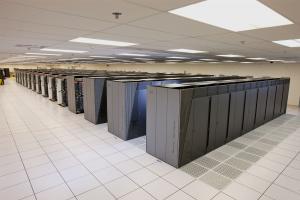
Sequoia earned the No. 4 position on the Top500 list of the most powerful superoomputers.
The muscles behind the machine
The U.S. plans to have a supercomputer by early 2018 with roughly double the performance of China's newest and most powerful system. The Chinese system, Sunway TaihuLight, was announced Monday in the latest release of the Top500, the biannual ranking of publicly known supercomputers.
The Department of Energy, which buys many of the supercomputers used by the U.S. government for scientific research, has two major supercomputers planned for 2018.
One system, named Sierra, is a planned 150-petaflop IBM system that will be located at Lawrence Livermore National Lab, and is scheduled to be available for use by mid-2018.
That could move Livermore higher up on the Top500 list. This year, Livermore earned the No. 4 position on the list for its Sequoia supercomputer.
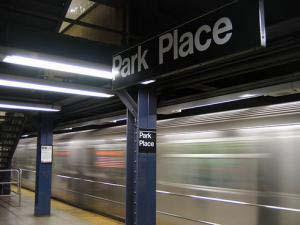
Knowing dispersal patterns in New York City subways gives a head start to reaction preplanners. Image courtesy of commons.wikimedia.org
Sniffing out the subway
Subway travelers around the world may breathe a little bit easier the next time a train blows into their station.
Over five days last month, the Department of Homeland Security (DHS), with help from Lawrence Livermore, conducted a massive test to find out what would happen if the particles that blow around the New York City subway weren’t just harmless pieces of dust or lint.
For the tests, scientists from DHS and its partners shot one gram of a harmless, aerosolized substance into the air every minute for 20 minutes. The subway system was running as normal the whole time.
The substance, called DNATrax, was developed by LLNL. DNATrax is a material that comes from wheat and cornstarch and has been used in the past to help the Centers for Disease Control and Prevention track food poisoning outbreaks.

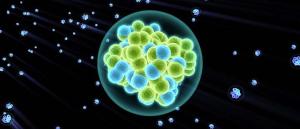
Element 117 is one of five elements discovered by Lawrence Livermore researchers and Russian collaborators.
One step beyond the existing periodic table
The latest elements to be discovered take the total to 118, but how much bigger will the periodic table get? Dawn Shaughnessy of Lawrence Livermore — who was a member of the team behind three of the newest elements (moscovium, tennessine and oganesson) — gives her opinions.
“We have to radically change how we do the experiments or you have to run for much longer periods of time to achieve element 120,” Shaughnessy said. “With the current technology, it would have to be a real heroic effort to get a 120 discovery at this point.
“But who knows in 20 years what the technology will look like. In the next 10-20 years, we’ll probably get up to 120.”
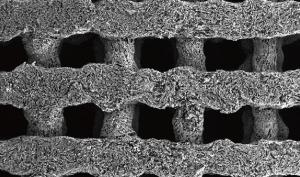
Lawrence Livermore National Laboratory engineer Cheng Zhu mixes ink material while scientists Fang Qian and Marcus Worsley observe. Photo by Julie Russell/LLNL
Double down
Researchers from Lawrence Livermore and UC Santa Cruz have designed a technique that could double the performance of 3-D printed graphene-based supercapacitors.
The new technique involves sandwiching lithium ion and perchlorate ion between layers of graphene in aerogel electrodes — a process that greatly improves the capacity of the electrodes while maintaining the high rate capability of the devices.
According to the team “this two-step electrochemical process increases the surface area of graphene-based materials for charge storage, as well as the number of pseudo-capacitive sites that contribute additional storage capacity.”

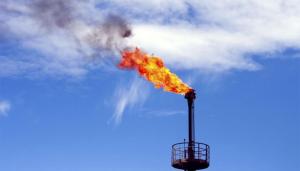
LLNL material scientist Jennifer Knipe loads a prepolymer-protein resin onto the stage of the large area projection microstereolithography system to be cured as a 3D-printed polymer.
From natural gas to liquid methanol in one easy step
Lawrence Livermore scientists have combined biology and 3-D printing to create the first reactor that can continuously produce methanol from methane at room temperature and pressure.
The team removed enzymes from methanotrophs, bacteria that eat methane, and mixed them with polymers that they printed or molded into innovative reactors.
This research could lead to more efficient conversion of methane to energy production.





